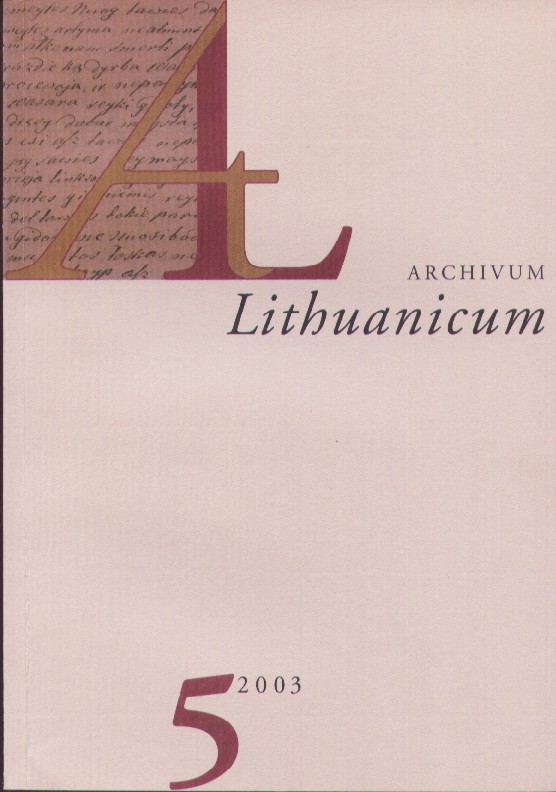Dar kartà apie lietuviø romëniðkosios kilmës teorijà: lingvistinë valakiškojo varianto samprata
Once more about the theory of the Roman origin of Lithuanian: The so-called Valachian linguistic variant
Author(s): Pietro Umberto DiniSubject(s): Theoretical Linguistics, Historical Linguistics, Comparative Linguistics, Baltic Languages, Philology
Published by: Lietuvių Kalbos Institutas
Keywords: Valachian linguistic variant; Roman origin of Lithuanian language;
Summary/Abstract: Many theories concerning the Baltic languages, and in particular Lithuanian, were quite popular during the Renaissance and circulated throughout all Europe: the Slavic Theory (cf. Enea Silvio Piccolomini), the Quadripartite Theory (cf. Miechovite), and the Roman Theory with their numerous variants. In my paper I emphasize the importance of the linguistic part of the Roman origin linguistic theory and stress its importance in the context of Renaissance linguistic theory. In the early Renaissance context one should distinguish methodologically between ideas about the origin of a people and ideas about the origin of a language. It was one thing to argue, that one people (e.g. the Lithuanians) developed from another people (e.g. the Romans), and it was another thing to say that one language (e.g. Lithuanian) developed from another language (e.g. Latin). This modern way of distinguishing the two realities is attributed to Biondo Flavio (1392-1463). The label "Roman linguistic theory" means a consideration of the Roman origin theory from a linguistic point of view. This was a notorious Renaissance theory belonging to the palaeocomparativistic current in prescientific linguistics, which considered the Baltic languages genealogically derived from and related to Latin. According to this theory the Lithuanian and the Old Prussian languages develop through corruption from the Latin language.
Journal: Archivum Lithuanicum
- Issue Year: 2003
- Issue No: 05
- Page Range: 195-206
- Page Count: 12
- Language: Lithuanian

